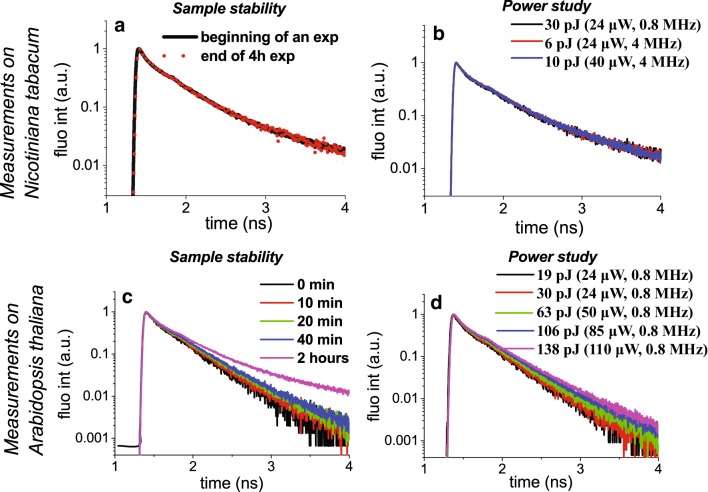Fig. 2.
Sample stability study and power study should always be performed during time-resolved fluorescence measurements on intact leaves and isolated samples. The checks are performed at a characteristic wavelength, 686 nm, which is close to PSII and free Chl emission maxima. a, b Measurements on Nicotiana tabacum leaves in Fo state. Rotation speed was 1200 rpm. Side movement was 80 mpm. a Sample stability was confirmed by measuring fluorescence decay traces at the beginning and end of the experiment. b The power study demonstrated that the fluorescence kinetics are not affected in the range between 20 and 60 µW (corresponding to the pulse energy of 6–30 pJ). c, dArabidopsis thaliana leaves require different measuring conditions than N. tabacum to achieve Fo state. c Rotation speed was 1200 rpm. Side movement was 80 mpm. Sample stability was tested by measuring fluorescence decay traces every 10 min during the experiment. The stability study demonstrated that A. thaliana leaves cannot withstand the same rpm as N. tabacum: irreversible damage to the leaves occurs after only 40 min of rotation. Experimentally, a slower speed of 700 rpm was determined to be optimal for A. thaliana leaves. d Power study of A. thaliana leaves upon 700 rpm rotation: no more than 25 µE should be used to achieve Fo state at speeds of 700 rpm

